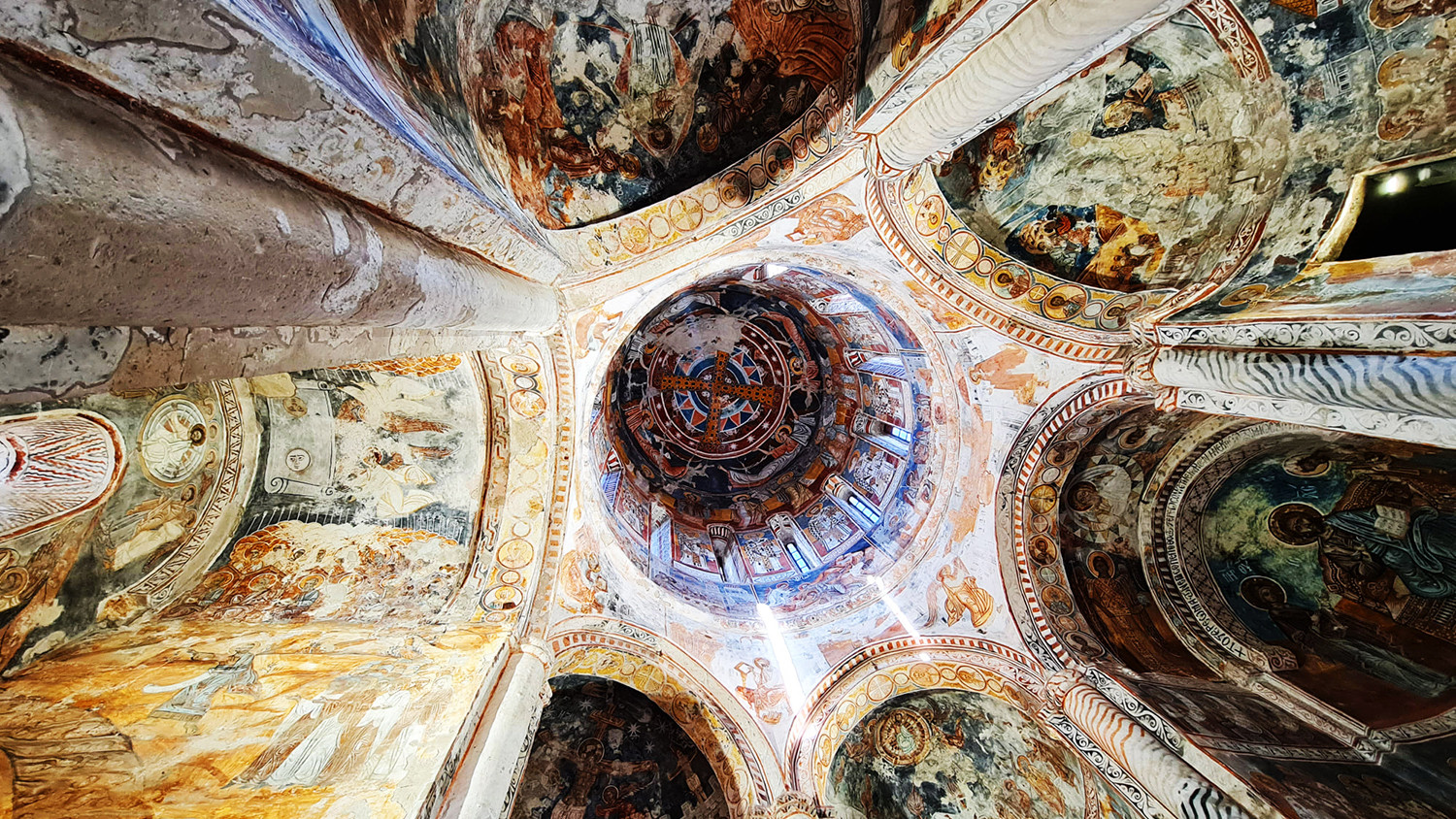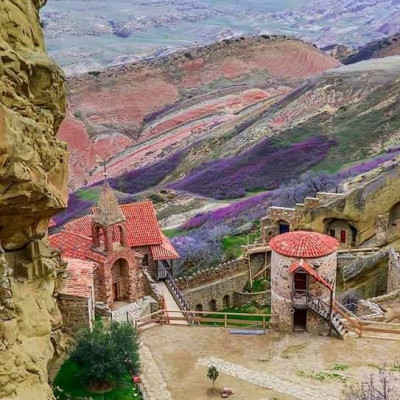
Nikortsminda Temple, located in the mountainous region of Racha in western Georgia, is one of the most significant monuments of the country’s spiritual and cultural history. Built between 1010 and 1014 under King Bagrat III, it represents the architectural brilliance of Georgia’s Golden Age and reflects the deep faith of its people. Surrounded by the breathtaking Caucasus landscape, the temple serves as a place of worship, history, and inspiration, drawing both pilgrims and travelers to its sacred grounds. Dedicated to St. Nicholas, the cathedral is a masterpiece of the Georgian cross-domed style, decorated with exquisite stone carvings that portray biblical stories, floral patterns, and symbolic figures. The reliefs, including the Last Judgment and mythical animals, show the fusion of Christian theology with Georgian artistic tradition. Inside, the 17th-century frescoes remain one of Georgia’s most important artistic treasures, covering the walls with colorful depictions of Christ, the Virgin Mary, saints, and biblical scenes. These paintings were designed not only as art but also as a way to teach the faithful in times when literacy was rare. Nikortsminda has been a spiritual center for over a thousand years, surviving natural disasters and historical challenges while continuing to serve as a symbol of resilience and devotion. It has been listed on UNESCO’s tentative World Heritage sites, emphasizing its universal cultural importance. The harmony between the temple and its natural surroundings makes a visit to Nikortsminda both a cultural and spiritual experience, where architecture, nature, and faith unite in perfect balance. Beyond religion, the temple is part of the wider identity of Racha, a region famous for its hospitality, traditions, and the renowned Khvanchkara wine. Visitors not only admire the cathedral but also discover the beauty of Racha’s landscapes, folklore, and cuisine. For centuries, efforts have been made to restore and preserve Nikortsminda, ensuring its frescoes and carvings remain protected for future generations, while it still hosts ceremonies and festivals that keep traditions alive. The temple embodies the essence of Georgia: a bridge between East and West, between art and spirituality, and between the struggles of history and the resilience of faith. For travelers, a journey to Nikortsminda is much more than sightseeing; it is an encounter with Georgia’s living soul. Standing before its ancient stones, surrounded by the silence of Racha’s mountains, visitors can feel the timeless spirit that has defined the country for centuries. Nikortsminda Temple remains not only the spiritual jewel of Racha but also one of the most powerful symbols of Georgia’s cultural wealth.






 Deutsch
Deutsch
 русский
русский
